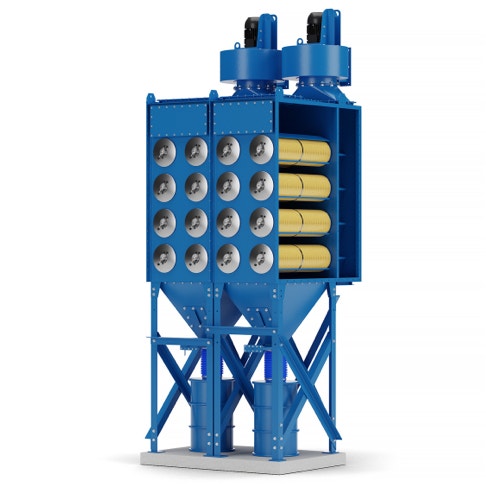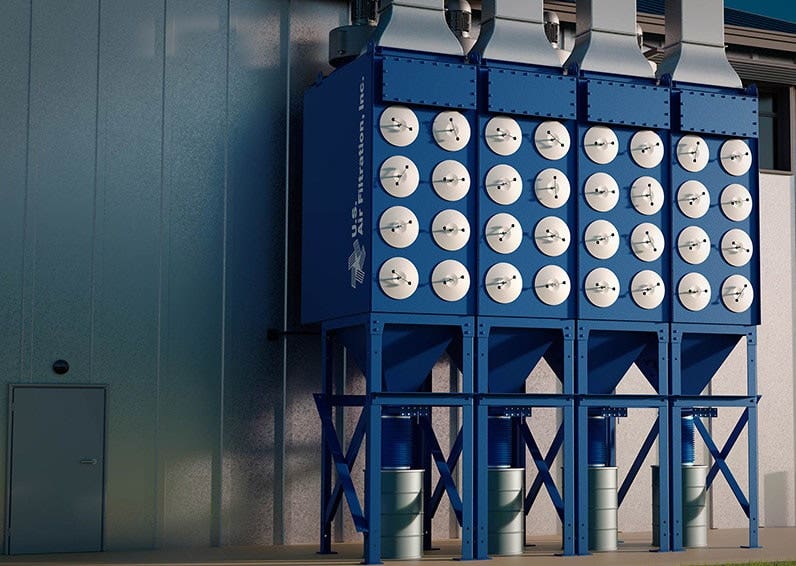Dust collection systems can perform poorly due to inadequate dust collector and duct work designs. There can be a large amount of misinformation about the proper duct work for your application and unit. There are several variables that factor into the right duct work design for system. Variables can range from number of machines running at one time, duct carrying velocities, can velocity, dust characteristics, and air requirements.
When you get into the details of dust collection duct design, it can become very complex. We would like to provide you with some simple guidelines that can help you get started.
If you are working with combustible dust, you also want to ensure you have the right carrying velocity. Air moving too slow can allow the dust to settle out inside the duct clogging the duct, reducing the effective size of the duct, and creating more risk for an explosion or fire. On the other hand, if your air is moving too fast it can cause unnecessary abrasion of the duct side walls from the airborne dust rubbing against it.
To learn more about other important factors you should consider when designing a new baghouse, cartridge collector or bin vent dust collection system, including air-to-cloth ratio, can velocity, airflows and more, download our dust collector purchasing guide.
When you get into the details of dust collection duct design, it can become very complex. We would like to provide you with some simple guidelines that can help you get started.
Guidelines for Dust Collection Duct Design
- The general rule of thumb is that the less duct work you have, the cheaper it’s going to be. The less bends and elbows required are ideal.
- Less static can mean a more cost friendly exhaust blower requiring less HP and energy consumption.
- Straight runs are best. This reduces wear issues and resistance in your duct system.
- Smooth out those curves! If you need to create curves or turns, make them as gentle and gradual as possible. Long radius bends will reduce static pressure resistance and can improve your airflow.
- Don’t create long duct runs, keep them as short as possible, if at all possible. Longer duct runs can create higher static pressure, reduce air velocity, and increase the risk of dust buildup.
- Open or larger diameter pipe sizes can allow for more movement and less static pressure.
- Consult an expert for typical duct carrying velocities based on dust density.
If you are working with combustible dust, you also want to ensure you have the right carrying velocity. Air moving too slow can allow the dust to settle out inside the duct clogging the duct, reducing the effective size of the duct, and creating more risk for an explosion or fire. On the other hand, if your air is moving too fast it can cause unnecessary abrasion of the duct side walls from the airborne dust rubbing against it.
To learn more about other important factors you should consider when designing a new baghouse, cartridge collector or bin vent dust collection system, including air-to-cloth ratio, can velocity, airflows and more, download our dust collector purchasing guide.









